31 Photos Depicting What American Grocery Stores Looked Like Throughout The Decades
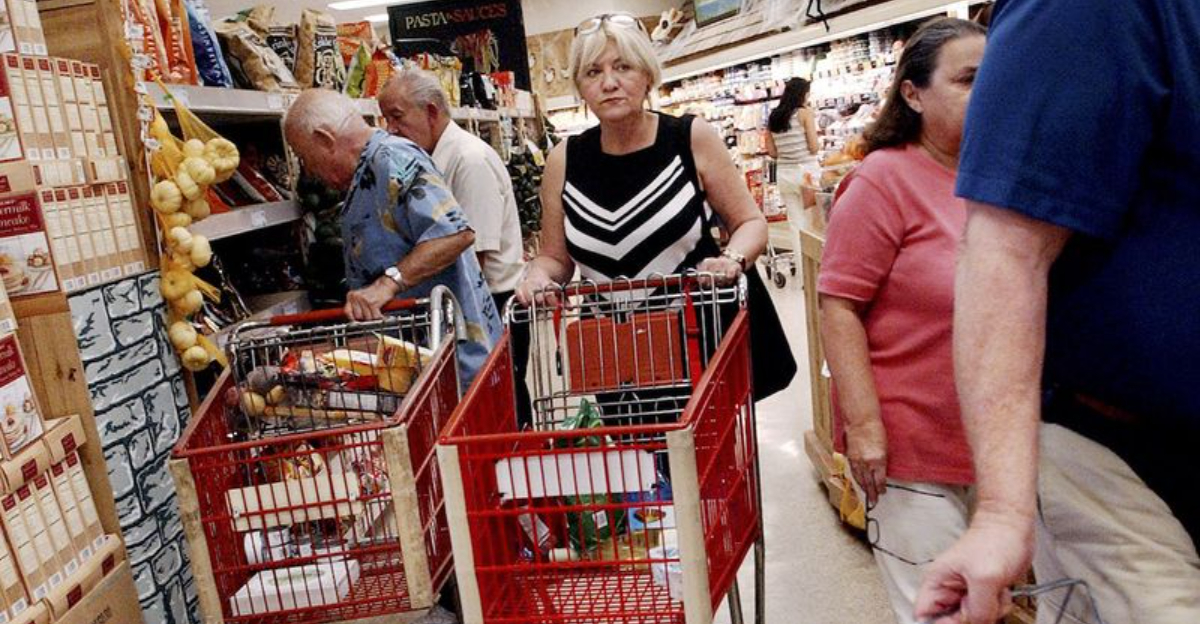
Ah, the nostalgic aisles of yesteryear—where grocery carts weren’t just squeaky-wheeled necessities but full-blown time machines, guiding us through the ever-evolving saga of American food culture.
Remember when cereal boxes had games on the back and frozen dinners were the peak of futuristic dining? Walking through a grocery store used to feel like flipping through a scrapbook of national tastes and trends.
From mom-and-pop corner stores to fluorescent-lit supermarkets bursting with options, these unsung culinary arenas have kept pace with everything from TV dinners to kale smoothies.
Whether you were chasing the scent of fresh-baked bread or marveling at the automatic doors like they were magic, the grocery store has always been more than just a place to stock up—it’s a living, breathing museum of how (and what) we eat. So grab a cart and join us on a whimsical stroll through the aisles of time—no membership required.
1. Piggly Wiggly (1918)
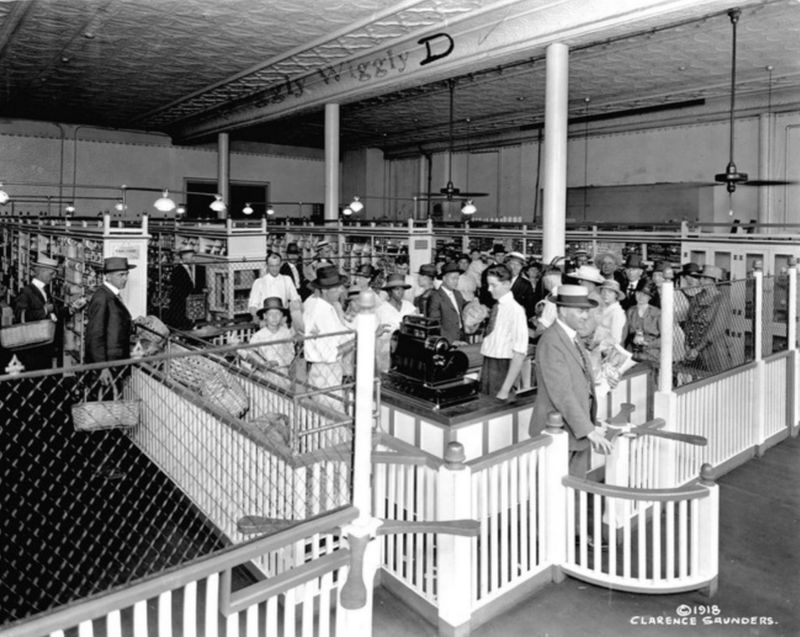
Once upon a time, in the land of Memphis, Tennessee, there stood a store that would revolutionize the way we shop—Piggly Wiggly. Opened in 1916, this magical place was the very first self-service grocery store. Imagine the thrill of picking your own groceries! No more handing a list to a clerk; you were the master of your own shopping destiny. Shoppers wandered the aisles like explorers in a new world, marveling at the freedom to choose. It was grocery shopping, but with a dose of liberation!
The aisles were narrow, the shelves brimming with possibilities, and the air filled with the scent of fresh produce and adventure. It was the dawn of a new era, and Piggly Wiggly was the trailblazer leading the charge. The store’s innovative layout was designed to guide customers through a predetermined path, ensuring they saw every product on offer. Talk about strategic marketing!
Piggly Wiggly wasn’t just a store; it was a revolution. The simple act of grabbing a can of beans became an experience, a testament to modern shopping’s birth. With each item chosen, customers were crafting their own culinary stories, one purchase at a time.
2. Kroger (1940s)
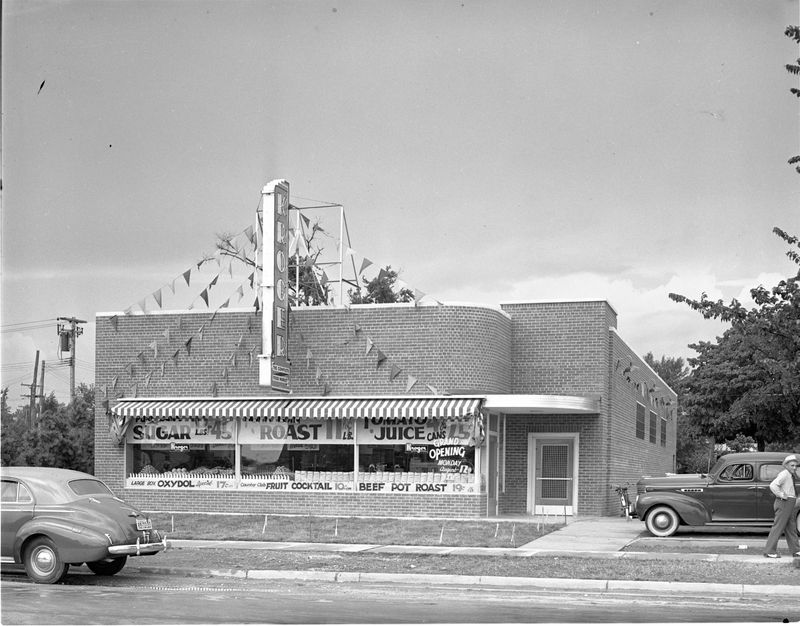
Picture this: the 1940s, an era of jazz, swing, and… self-service grocery shopping! Kroger was at the forefront, transforming the mundane task of shopping into an organized and efficient experience. Their stores in the 1940s were nothing short of a well-oiled machine. Customers strolled through aisles that were meticulously arranged, making shopping feel more like a well-choreographed dance.
With the expansion of the self-service model, Kroger offered a smorgasbord of products, all neatly lined up, begging to be plucked from the shelves. The atmosphere was electric, with the buzz of shoppers who knew exactly what they wanted—or at least thought they did until they saw the dazzling variety on display.
Kroger’s innovation extended beyond just the layout. They were one of the first to introduce refrigerated sections, keeping perishables cool as a cucumber and fresher than a morning breeze. It was a game-changer, a fresh (pun intended) take on grocery shopping that left customers coming back for more. Kroger wasn’t just a store; it was a gateway to convenience, offering a slice of modern life in every aisle.
3. Safeway (1960s)
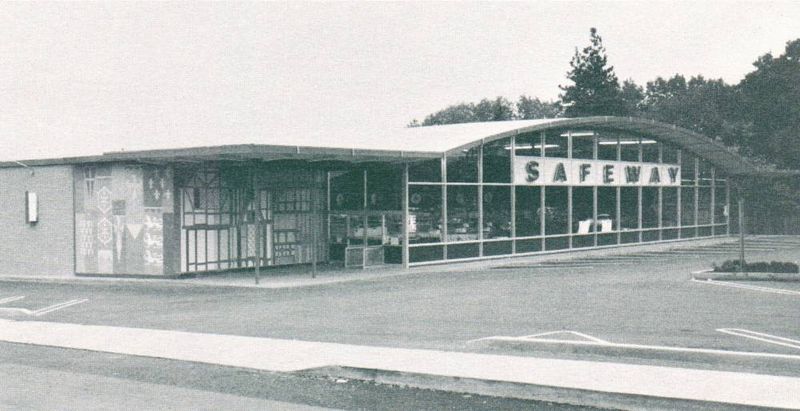
Ah, the swinging 60s, a time of change, groovy tunes, and Safeway stepping up its grocery game. The decade marked Safeway’s transformation into a modern marvel of shopping convenience. Checkout lanes became streamlined, making the dreaded task of waiting in line as smooth as a Beatles melody.
The 1960s was an era that demanded variety, and Safeway answered with a plethora of products that catered to the evolving tastes of the American consumer. Shelves were stocked with everything from canned goods to fresh produce, providing a cornucopia of choices that would make any shopper’s heart sing.
Safeway wasn’t just following the trend; it was setting the pace. With their modern store layouts and customer-centric approach, they turned the weekly shopping trip into an event rather than a chore. It was a place where the community gathered, where aisles became social hubs, and where shopping was, dare I say, fun! Safeway in the 60s was more than a grocery store; it was a cultural icon, reflecting the spirit of the times in every aisle.
4. Publix (1960s)
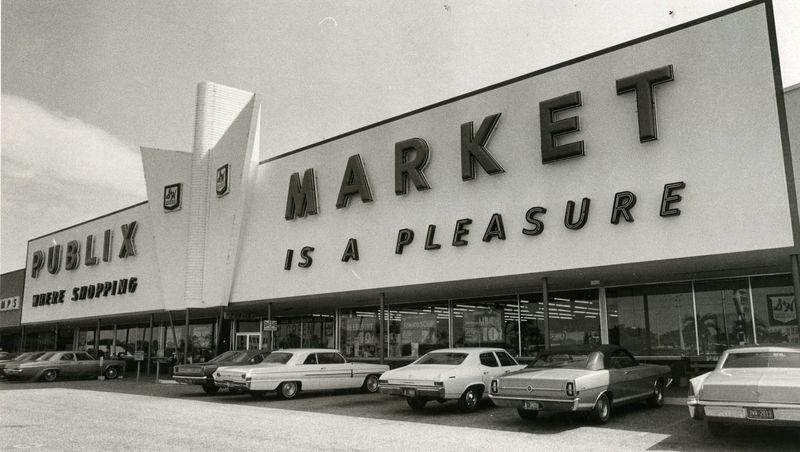
In the colorful tapestry of 1960s grocery shopping, Publix wove its way into the hearts of many. Known for its wide aisles and revolutionary self-service dairy cases, Publix was all about customer convenience. Shopping there felt less like a chore and more like a pleasant stroll through a marketplace of endless possibilities.
Publix was the place where you could find everything on your list and then some. They pioneered the concept of ‘one-stop shopping’ long before it was trendy, ensuring that no shopper left without a smile—or a cart full of goodies. The expansive aisles were a breath of fresh air, allowing for a leisurely pace as you explored the delights of grocery shopping.
Their commitment to convenience was matched only by their dedication to customer service. Employees were friendly, always ready with a helpful suggestion or a warm greeting. Publix was more than just a supermarket; it was a community cornerstone. In the 1960s, it became a beloved institution, a place where grocery shopping was elevated to an art form, and every trip promised new discoveries.
5. Walmart Supercenter (1988)
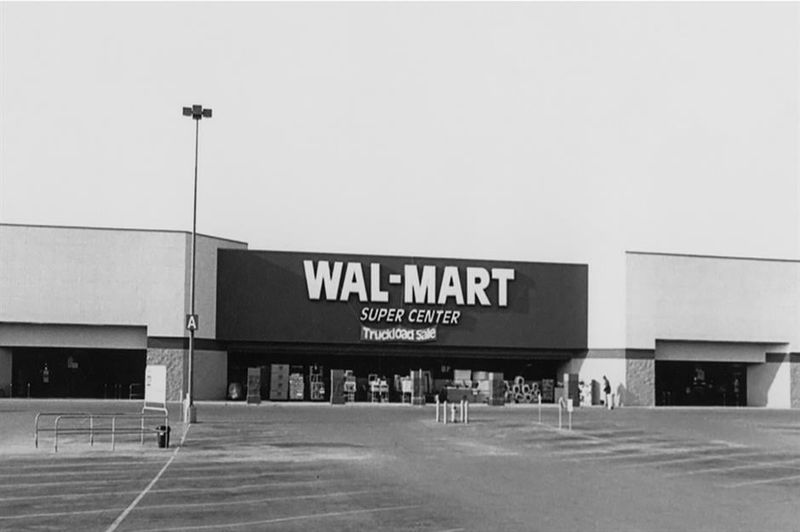
Fast forward to 1988, where everything was bigger, bolder, and more, well, ‘super.’ Enter the Walmart Supercenter, the behemoth that changed the retail landscape forever. Combining a full-service supermarket with a general merchandise store, it was the shopping equivalent of hitting the jackpot.
Walking into a Walmart Supercenter was like entering a shopping wonderland. One moment you were selecting fresh produce, and the next, you were perusing electronics or trying on clothes. The possibilities were endless, and so were the aisles. It was a one-stop shop that promised and delivered convenience on an unprecedented scale.
Walmart’s innovative approach was a hit with consumers, who flocked to the Supercenters for their vast selection and competitive prices. The late 80s were all about excess, and Walmart was no exception. It catered to the needs of the modern shopper, offering everything under one roof and making the grocery run a thing of the past. The first Walmart Supercenter was more than just a store; it was a game-changer, a retail revelation that set the stage for the future of shopping.
6. A&P (1920s)

The 1920s marked a transformative era for A&P grocery stores. As one of the pioneers of the self-service model, A&P introduced an innovative shopping experience that allowed customers to freely browse and select products at their own pace.
This shift revolutionized the retail industry, as shoppers were no longer reliant on clerks to retrieve items for them.
This decade also saw the introduction of numerous A&P branded products, offering consumers a wide variety of affordable options. The vibrant stores, filled with colorful packaging and bustling aisles, became a staple in American communities, reflecting the changing landscape of consumer culture.
7. Great Atlantic & Pacific Tea Company (1930s)
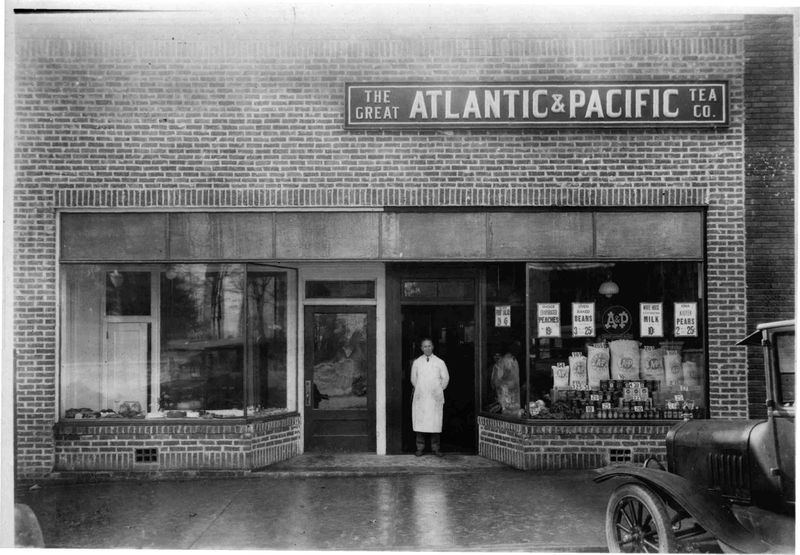
During the 1930s, the Great Atlantic & Pacific Tea Company, known as A&P, continued to expand its presence across the United States.
The stores adopted striking Art Deco design elements, mirroring the architectural trends of the era. Shoppers enjoyed a diverse selection of products, including an array of fresh produce and packaged goods.
Despite the economic challenges of the Great Depression, A&P’s affordable pricing and extensive product range kept customers returning. The decade’s images capture the resilience and innovation that defined the company’s continued success, making it an enduring icon in American retail history.
8. Safeway (1940s)
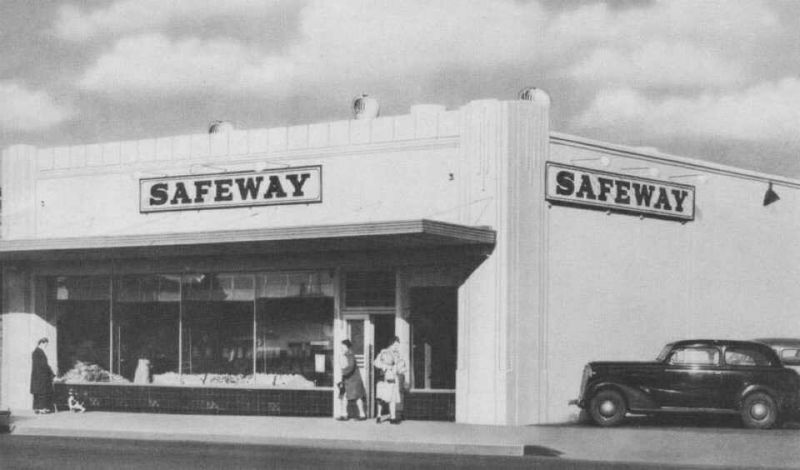
The 1940s brought about significant changes for Safeway as the company adapted to the challenges of World War II. With rationing and resource shortages, Safeway focused on providing essential goods to its customers while maintaining quality and affordability.
Stores featured classic designs and signage, with aisles stocked with wartime necessities and fresh produce.
Shoppers, often dressed in the era’s distinctive fashion, navigated these bustling aisles. Safeway’s commitment to community support and innovative solutions during this challenging period solidified its reputation as a trusted neighborhood store.
9. Pathmark (1970s)

Pathmark emerged as a major player in the grocery industry during the 1970s, characterized by its bold signage and innovative approach to retail. The stores featured wide aisles and vibrant product displays, aligning with the era’s emphasis on convenience and variety.
Shoppers, often clad in the colorful fashion of the disco era, appreciated the extensive selection of goods, including a notable focus on fresh produce and international foods.
Pathmark’s success during this time highlighted the shifting consumer preferences and the growing demand for a more engaging and diverse shopping experience.
10. Albertsons (1980s)

The 1980s saw Albertsons expanding its footprint across the United States with stores characterized by neon signage and a focus on customer convenience. The stores offered a diverse range of products, from fresh produce to household items, catering to the evolving needs of American families.
With shoppers dressed in the vibrant clothing of the era, Albertsons became a community staple, known for its friendly service and extensive selection.
The decade’s images capture the welcoming ambiance of Albertsons stores, reflecting the dynamic and consumer-focused retail environment of the time.
11. Trader Joe’s (1990s)
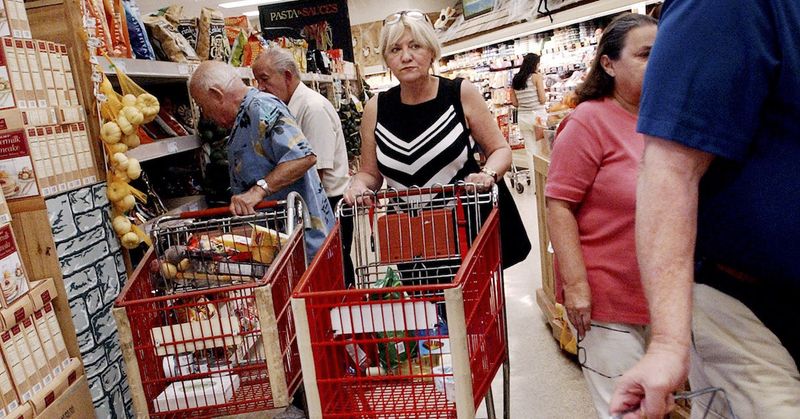
Trader Joe’s became synonymous with a unique shopping experience in the 1990s, known for its beach-themed decor and quirky product labels.
Shoppers were greeted with a cheerful ambiance and an eclectic mix of products, including an emphasis on organic and specialty items.
The stores’ distinctive culture, characterzed by friendly staff and innovative offerings, appealed to a wide range of consumers seeking quality and value. Trader Joe’s cultivated a loyal customer base during this decade, setting the stage for its ongoing success in the realm of grocery retail.
12. Costco (2000s)
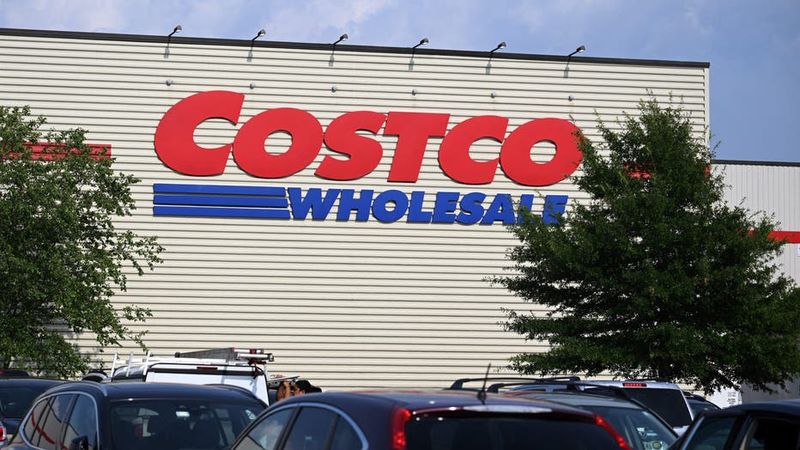
Costco revolutionized the grocery shopping experience in the 2000s with its warehouse-style stores and emphasis on bulk purchasing. Shoppers, often membership holders, navigated massive aisles filled with diverse products ranging from groceries to electronics.
The Costco model emphasized value and quality, attracting a wide demographic of consumers. The bustling stores, characterized by their sheer scale and efficient layout, became a hallmark of modern retail, offering everything from fresh produce to luxury items under one roof.
Costco’s impact on the industry remains significant, symbolizing the era’s consumer-driven trends.
13. Whole Foods Market (2010s)
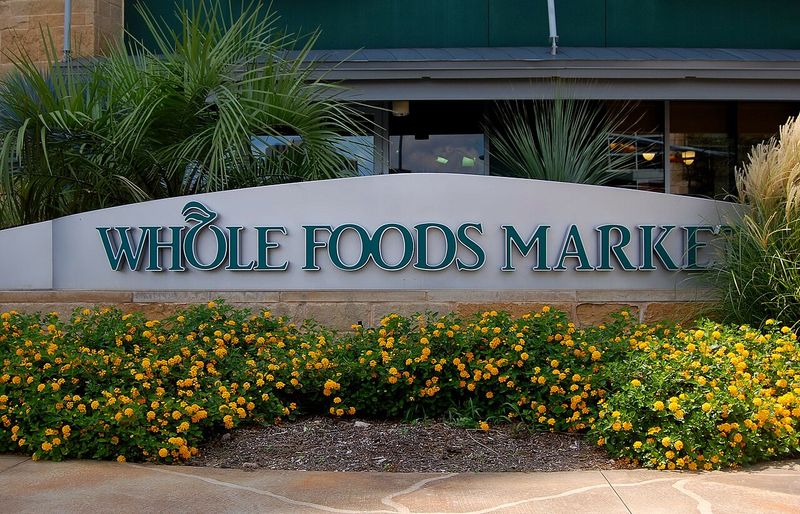
Whole Foods Market in the 2010s became the epicenter for organic and eco-conscious shopping. The store’s stylish interior and meticulously arranged produce displays attracted health-conscious consumers eager to explore sustainable options.
With an emphasis on quality and environmental responsibility, Whole Foods became a prominent player in the grocery industry. Shoppers, often eco-conscious and diverse in demographics, appreciated the store’s commitment to innovation and community engagement.
The decade’s images reflect Whole Foods’ influence on the growing demand for organic and natural products, shaping the future of grocery retail.
14. 7-Eleven (1970s)
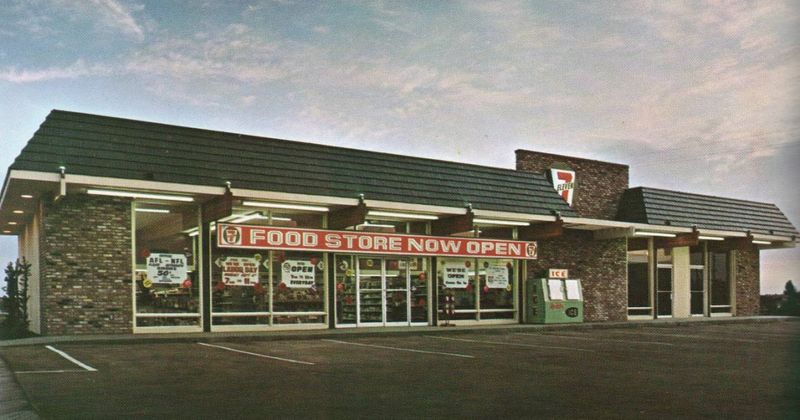
The 1970s marked a significant expansion for 7-Eleven across the United States. Known for its convenience, 7-Eleven stores became neighborhood staples, offering quick access to essentials and novelty items.
Images from this era capture the store’s retro signage and distinctive slushie machines, symbolizing the decade’s laid-back and easygoing lifestyle.
Shoppers, often wearing bell-bottoms and other popular fashion of the time, frequented these stores for their daily needs. 7-Eleven’s pioneering approach to convenience retail solidified its place in American culture, influencing how consumers approached everyday shopping.
15. IGA (1960s)

In the 1960s, IGA stores flourished in small-town America, maintaining a traditional grocery shopping experience amidst a rapidly changing retail landscape. Known for their community-oriented approach, IGA stores offered personalized service and a welcoming atmosphere.
The decade’s images showcase classic signage and grocery displays, reflecting the era’s emphasis on quality and local engagement.
Shoppers enjoyed a sense of familiarity and connection, often interacting with store staff on a first-name basis. IGA’s commitment to community values and personalized service has left a lasting impression on generations of shoppers.
16. Meijer (1950s)
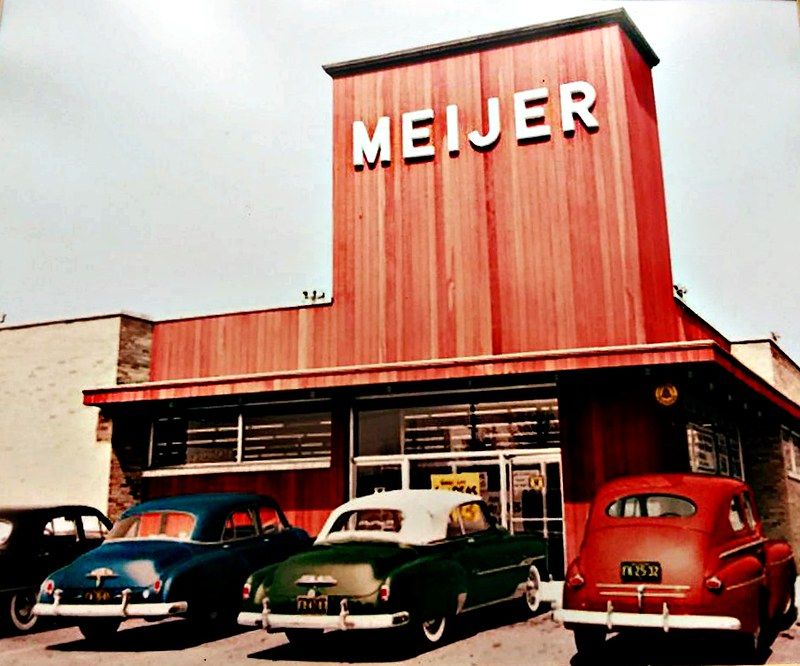
Meijer stores in the 1950s were at the forefront of the supermarket revolution, known for their innovative approach to retail. As a pioneer of the “one-stop shopping” concept, Meijer offered customers a wide range of products in a single location.
Images from this era capture iconic branding and vintage grocery carts, reflecting the spirit of post-war prosperity.
Families flocked to Meijer stores for their diverse selection of goods, from fresh produce to household essentials. The company’s vision and adaptability have cemented its legacy as a leader in the grocery industry, shaping consumer expectations.
17. King Soopers (1980s)

The 1980s saw King Soopers expanding its reach across the western United States, offering a welcoming shopping environment characterized by a diverse product range. Shoppers, often dressed in the vibrant fashion of the era, appreciated the store’s focus on quality and convenience.
King Soopers stores featured a variety of departments, from fresh produce to deli items, aligning with the decade’s emphasis on diverse and comprehensive shopping experiences.
The brand’s commitment to community engagement and innovative retail solutions has left a lasting impact on the grocery landscape, endearing it to many loyal customers.
18. Stop & Shop (1990s)

Stop & Shop in the 1990s represented a modern approach to grocery retail, focusing on convenience and variety. The stores featured colorful branding and modern aisles, creating an inviting atmosphere for shoppers exploring diverse product offerings.
Images from this era showcase the store’s commitment to innovation, with an emphasis on customer satisfaction and community involvement.
Stop & Shop’s ability to adapt to changing consumer preferences and technology has cemented its place as a trusted name in the grocery industry, shaping the shopping experiences of countless families.
19. Giant Eagle (2000s)
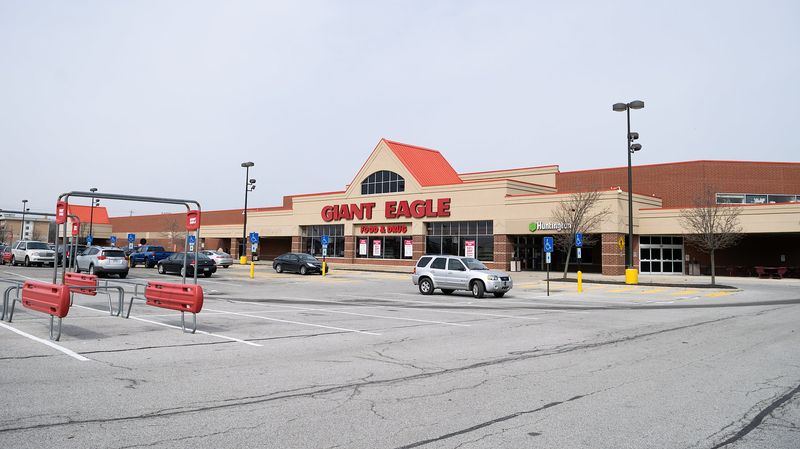
Giant Eagle in the 2000s became synonymous with a comprehensive shopping experience, known for its welcoming entrances and dynamic product displays. Shoppers enjoyed exploring a wide range of offerings, from fresh produce to premium household items.
The stores’ emphasis on quality and customer engagement contributed to their growing popularity, attracting a diverse demographic.
Images from this decade capture the vibrant atmosphere and innovative retail solutions that defined Giant Eagle’s approach, setting a new standard for grocery shopping in the new millennium. The company’s commitment to excellence continues to resonate with consumers today.
20. Hy-Vee (2010s)
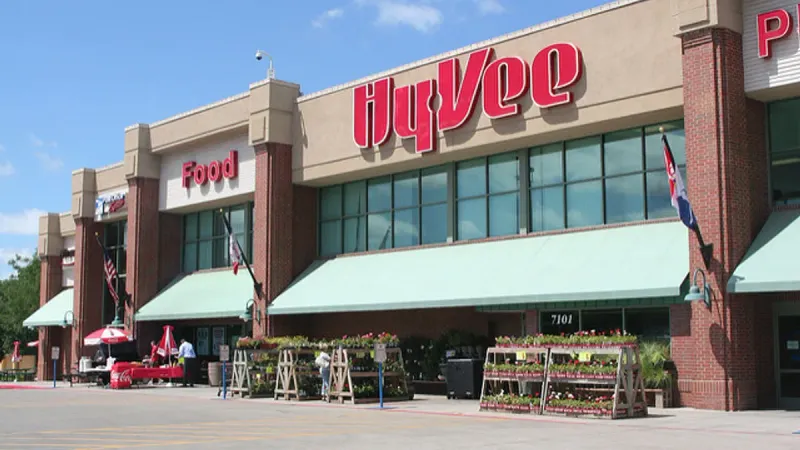
Hy-Vee in the 2010s embraced an eco-friendly and customer-centric approach to grocery retail, offering a gourmet shopping experience. The stores featured innovative designs and specialized sections, catering to health-conscious consumers seeking quality and variety.
Images from this era highlight Hy-Vee’s commitment to sustainability and community engagement, with shoppers exploring fresh, organic options in an inviting environment.
The company’s dedication to excellence and innovation has solidified its reputation as a leading name in the grocery industry, shaping the future of retail with a focus on consumer needs and environmental responsibility.
21. Save Mart (1980s)
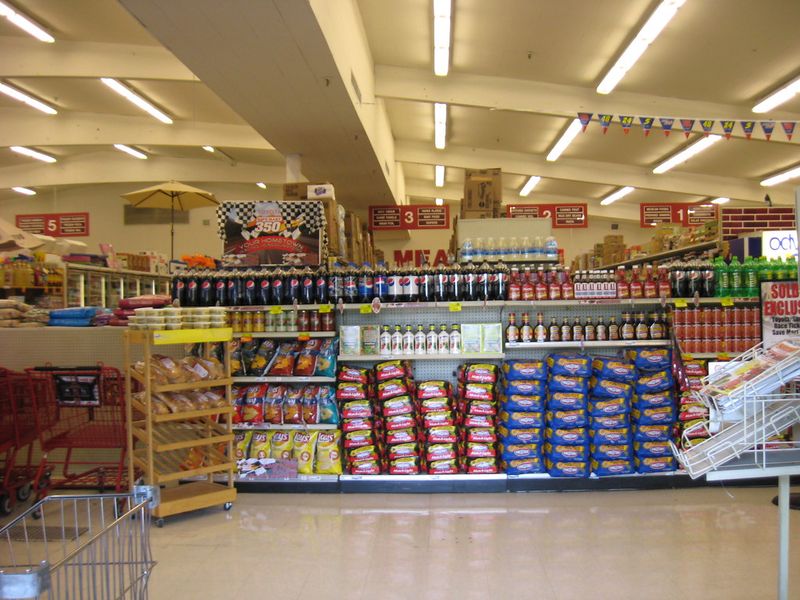
Save Mart emerged as a significant player in the grocery industry during the 1980s, characterized by its bold exterior and vibrant interior displays. The stores offered a wide range of products, catering to the diverse needs of American families.
Images from this era capture the dynamic shopping environment, with trendy shoppers exploring fresh produce and household items.
Save Mart’s focus on quality and affordability resonated with consumers, making it a trusted name in the grocery landscape. The brand’s commitment to innovation and customer satisfaction continues to influence the industry today.
22. Ralphs (1990s)
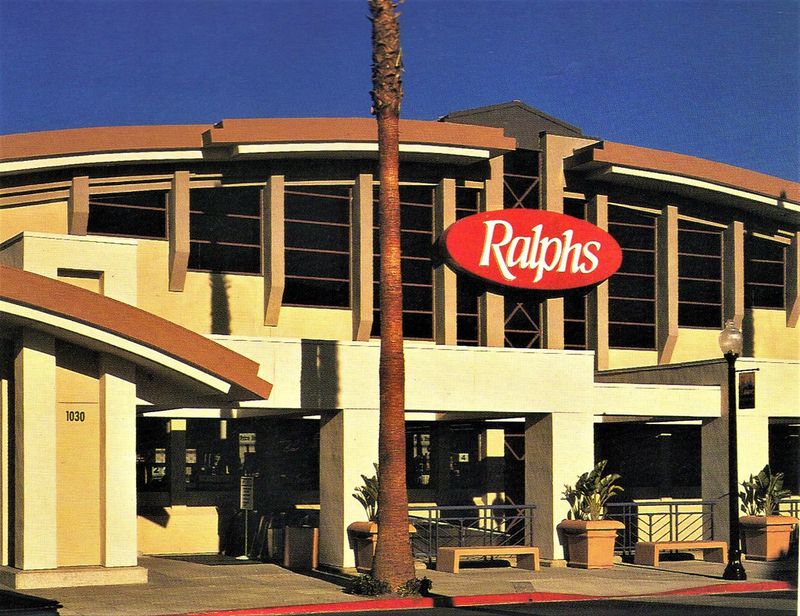
Ralphs in the 1990s stood out for its modern design and diverse product range, offering a vibrant shopping experience for contemporary consumers. The stores featured clean layouts and inviting decor, appealing to a wide range of shoppers seeking quality and convenience.
Images from this era showcase Ralphs’ commitment to customer satisfaction and innovative retail solutions, with an emphasis on fresh produce and specialty items.
The brand’s adaptability and focus on consumer preferences have cemented its reputation as a leading name in the grocery industry, shaping the shopping habits of countless families.
23. Acme Markets (1970s)
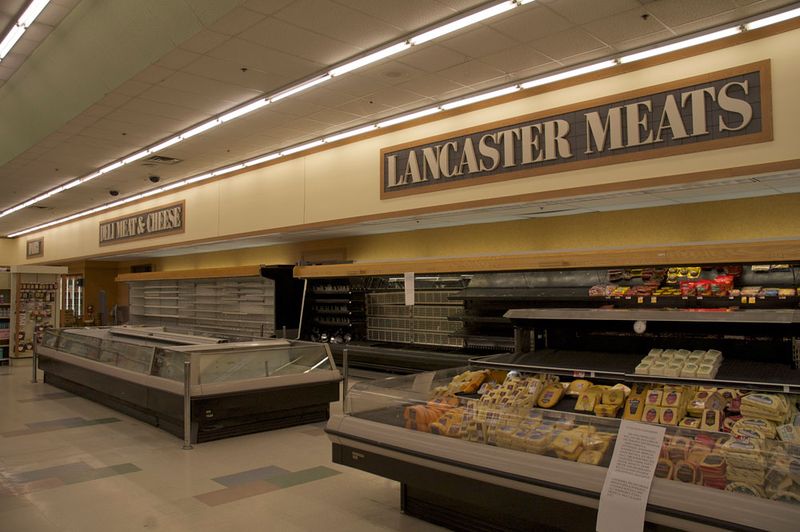
Acme Markets in the 1970s offered a classic shopping experience characterized by its traditional facade and dedication to customer service. The stores featured vintage grocery carts and a wide variety of products, appealing to families seeking quality and value.
Images from this era capture the store’s welcoming atmosphere, with shoppers in period-accurate clothes exploring the aisles.
Acme Markets’ commitment to community engagement and personalized service has left a lasting legacy, shaping the shopping experiences of generations. The brand’s enduring appeal continues to resonate with consumers, reflecting its adaptability and focus on customer needs.
24. Winn-Dixie (1980s)
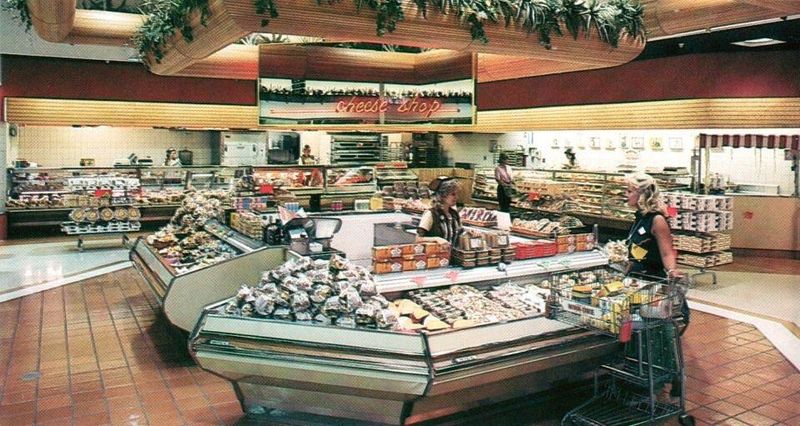
Winn-Dixie in the 1980s became a household name in the Southeastern United States, known for its bright signage and diverse product offerings. The stores provided a vibrant shopping environment, with a focus on quality and affordability.
Images from this era showcase shoppers in colorful fashion exploring the aisles, reflecting the decade’s dynamic consumer culture.
Winn-Dixie’s commitment to community values and customer satisfaction has solidified its reputation as a trusted name in the grocery industry, influencing the shopping habits of countless families. The brand’s adaptability and focus on consumer needs continue to resonate today.
25. Food Lion (1990s)
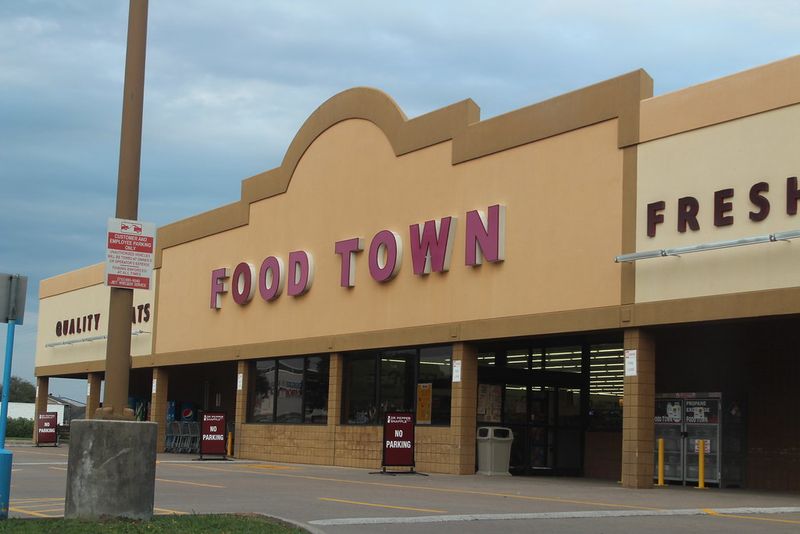
Food Lion in the 1990s became a prominent name in the grocery industry, known for its inviting facade and shopper-friendly layout. The stores featured wide aisles and a diverse range of products, appealing to a broad demographic of consumers.
Images from this era capture the bustling shopping environment, with customers exploring fresh produce and household essentials.
Food Lion’s focus on quality and affordability has earned it a loyal customer base, cementing its reputation as a leading name in grocery retail. The brand’s commitment to innovation and community engagement continues to shape the industry today.
26. HEB (2000s)
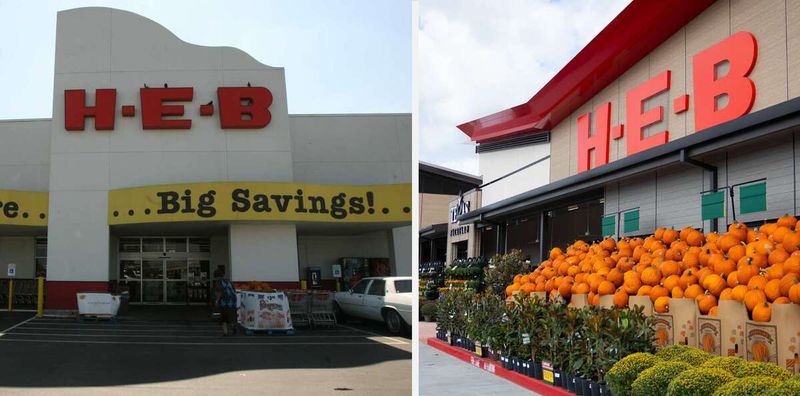
HEB in the 2000s stood out for its expansive interiors and focus on gourmet offerings, catering to discerning shoppers seeking quality and variety. The stores featured specialized sections for fresh produce, deli items, and international foods, appealing to diverse consumer preferences.
Images from this era highlight HEB’s commitment to quality and customer satisfaction, with shoppers exploring a vibrant and inviting retail environment.
The brand’s dedication to innovation and community engagement has solidified its place as a leader in the grocery industry, shaping the future of retail with a focus on excellence and diversity.
27. Kmart (1990s)
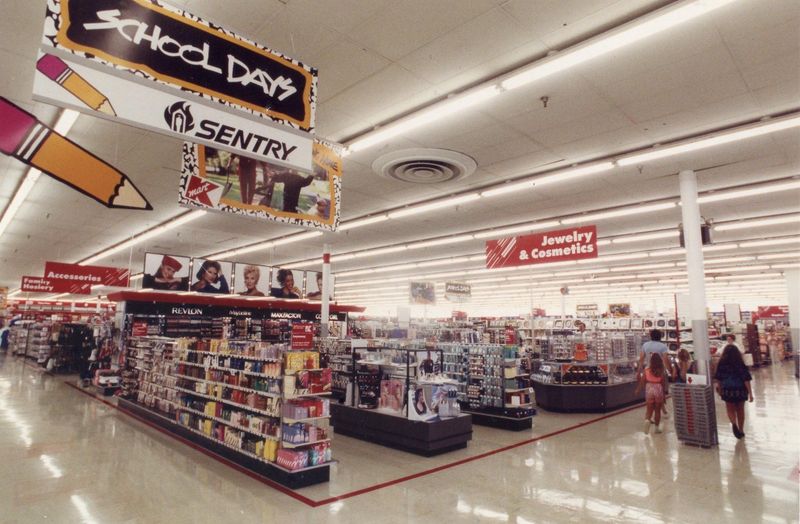
Kmart in the 1990s became a household name across America, known for its iconic blue light specials and wide product range. The stores offered a one-stop shopping experience, catering to families seeking convenience and value.
Images from this decade capture the bustling atmosphere, with shoppers exploring diverse departments and promotional offers. Kmart’s focus on affordability and customer engagement has left a lasting legacy, influencing the shopping habits of countless consumers.
The brand’s adaptability and commitment to innovation continue to resonate, reflecting its enduring appeal in the retail landscape.
28. Jewel-Osco (1980s)
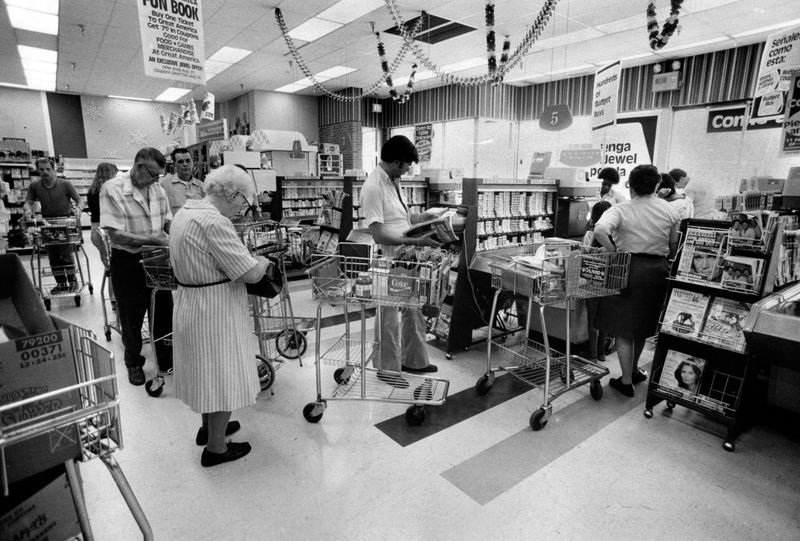
Jewel-Osco in the 1980s represented a vibrant and community-oriented shopping experience, known for its classic exterior and dynamic interior displays. The stores offered a wide range of products, from fresh produce to specialty items, appealing to a diverse consumer base.
Images from this era capture the lively atmosphere, with shoppers in trendy clothing exploring the aisles.
Jewel-Osco’s commitment to community engagement and innovative retail solutions has solidified its reputation as a leading name in the grocery industry, shaping the shopping habits of generations. The brand’s dedication to quality and affordability continues to resonate today.
29. Fred Meyer (1990s)
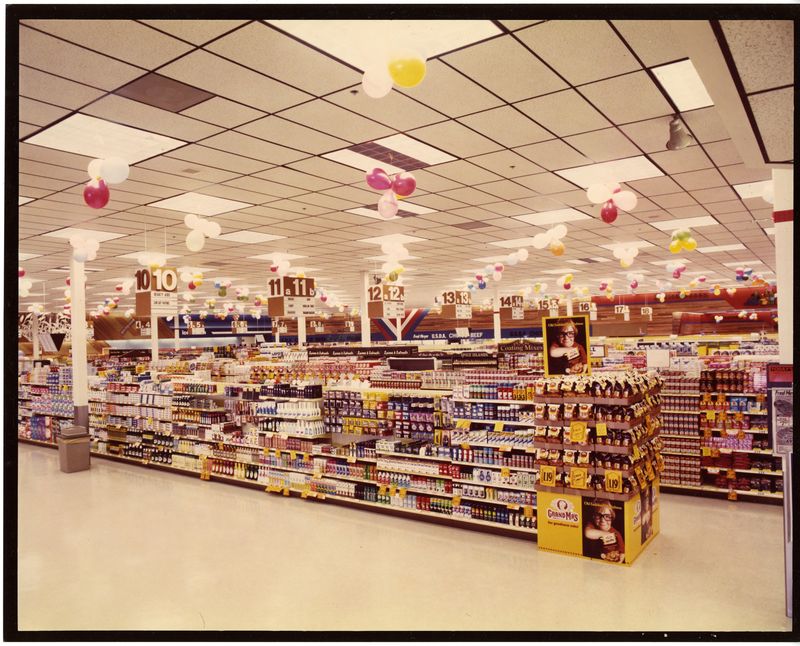
Fred Meyer in the 1990s offered an expansive and diverse shopping experience, known for its wide range of products and customer-friendly layout. The stores featured sections for groceries, clothing, and home goods, catering to various consumer needs.
Images from this decade showcase Fred Meyer’s commitment to quality and innovation, with shoppers exploring a welcoming and dynamic retail environment.
The brand’s adaptability and focus on customer satisfaction have solidified its place as a leader in the grocery industry, influencing the shopping habits of countless families. The brand’s enduring appeal continues to resonate today.
30. Harris Teeter (2000s)
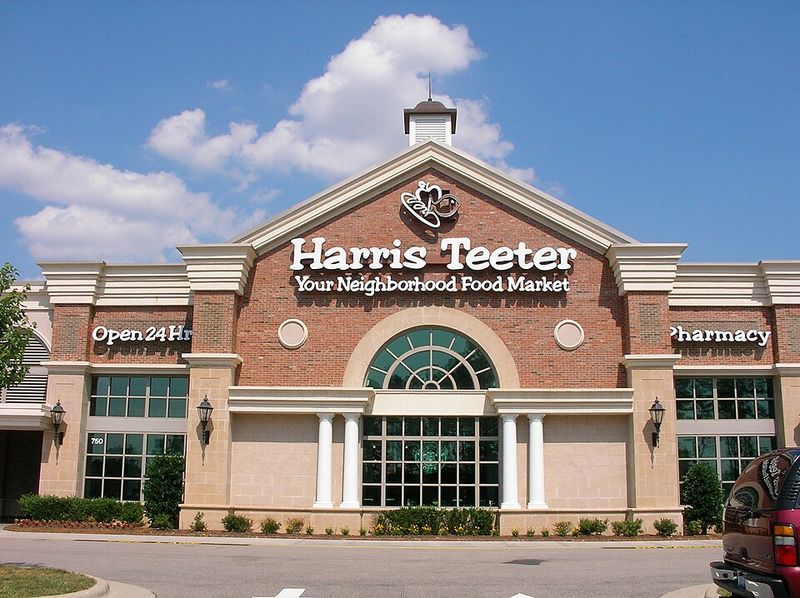
Harris Teeter in the 2000s embraced a modern and upscale approach to grocery retail, offering gourmet sections and high-quality products. The stores featured stylish interiors and specialized displays, attracting discerning shoppers seeking variety and value.
Images from this era highlight Harris Teeter’s commitment to excellence and customer satisfaction, with shoppers exploring fresh, premium offerings.
The brand’s dedication to innovation and community engagement has solidified its reputation as a leading name in the grocery industry, shaping the future of retail with a focus on consumer needs and quality.
